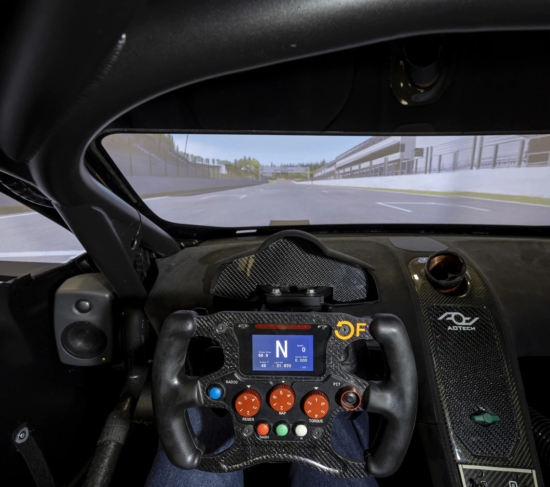Michelin buys Canopy Simulations for its ‘virtual driver’ technology
 UK-based Canopy Simulations provides one of the market’s most sophisticated simulation software tools, according to Michelin (Photo: Michelin)
UK-based Canopy Simulations provides one of the market’s most sophisticated simulation software tools, according to Michelin (Photo: Michelin)
Michelin has bought UK-based simulation software specialist Canopy Simulations for an undisclosed fee. Since Michelin has been developing dynamic virtual tyre models for the last couple of decades using its Tame Tire software, it appears the plan is to combine Canopy’s “virtual driver” with Tame Tire, taking Michelin’s virtual modelling to the next level.
Michelin describes simulation as the “ideal tool for the development of tyres for racing or production sports cars”. The process is efficient and more environmentally friendly than traditional development techniques due to a shorter development time and therefore a reduction in the consumption of raw materials and CO2 emissions.
When it comes to tyre development processes, the combination of mathematical modelling and simulators makes it possible to determine which tyre sizes and technologies are best suited to a new car model based on technical and weight distribution characteristics.
At the 2023 Le Mans 24 Hours, for example, all the prototypes competing in the race’s headlining Hypercar class will be equipped with tyres that were developed entirely using simulation software.
Canopy Simulations and the ‘virtual driver’
According to Michelin, UK-based Canopy Simulations provides one of the market’s most sophisticated simulation software tools. Its cloud-based system combines circuit, car and tyre models with an advanced trajectory optimisation function to simulate the perfect ‘virtual driver’.
Specifically, the technology reproduces dynamic reality thanks to the interaction of three digital models.
The first replicates the characteristics and grip properties of circuits; the second covers the properties of the vehicle’s chassis (or even the entire vehicle); and the third reproduces tyre behaviour in extreme detail. Behind the wheel of a simulator, drivers are able to test different types of tyre across an exceptionally wide spectrum of configurations.
To complete the process, the drivers’ subjective impressions and feedback are taken onboard alongside the objective data provided by the simulator, on which drivers perform just as they would in a real car or on a real racetrack.
“By accelerating innovations that favour increasingly efficient racing and mobility, simulation optimises Michelin’s work with its partners and vehicle manufacturers, while at the same time reducing its Research and Development environmental footprint and providing real savings compared with longer, more traditional development cycles,” says John Howe, managing director of Michelin UK.
Data analysis has been increasingly important part of motorsport for the last 30 years. Back in 2005 – at the time of Michelin’s involvement in Formula 1 – Michelin decided to make its virtual tyres ‘dynamic’. In other words, Michelin R&D experts created independent mathematical models for each element of a tyre’s construction. Meanwhile, Michelin’s thermodynamic Tame Tire software made it possible for these different elements to interact by replicating the way they deform and how the properties and behaviour of raw materials and tyre pressures were influenced by temperature fluctuations.
Tame Tire has since continued to “evolve” thanks to the quantities of technical data collected at races.
“The use of simulation technology for tyre testing and development is a necessary step forward in the industry. It enables Michelin to be more environmentally sustainable in its tyre development and testing processes, while benefitting from real-life data to keep developing tyres that offer drivers the level of performance they need,” concludes John Howe.

 Chris Anthony/Tyre Industry Publications Ltd
Chris Anthony/Tyre Industry Publications Ltd
Comments